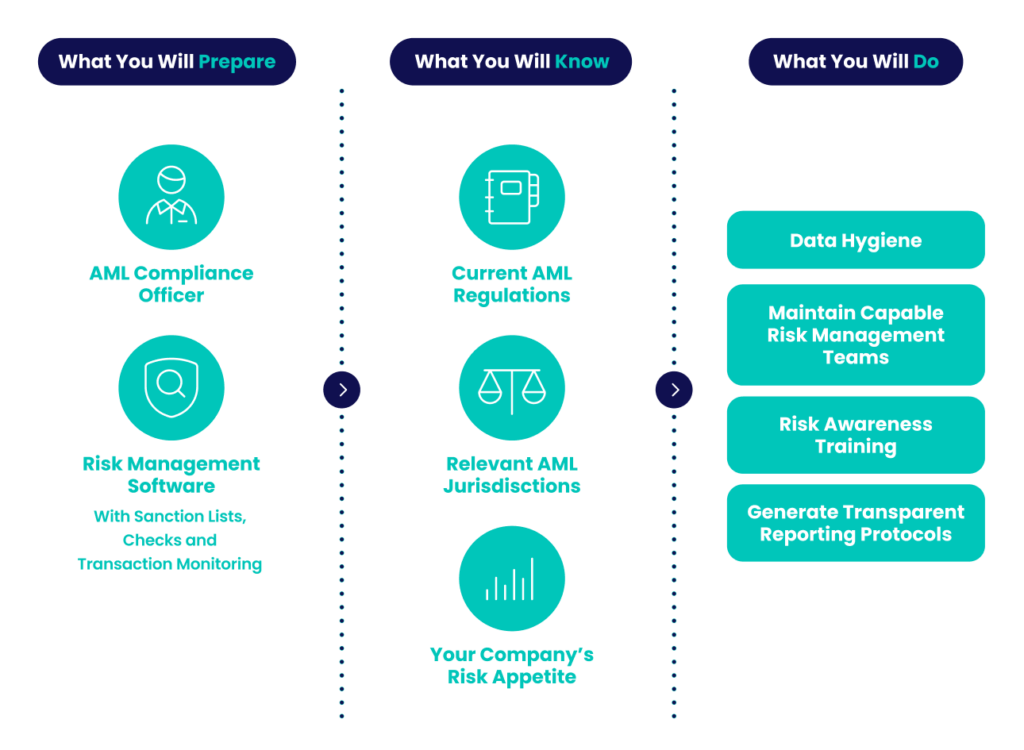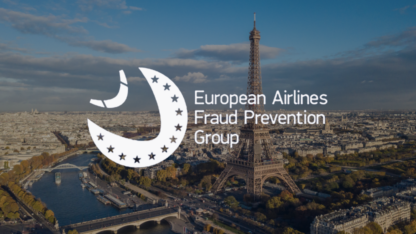Sanctions screening is essential for compliance in financial and regulated sectors, helping prevent money laundering and terrorism while supporting global financial security. With over 57,000 active records across 300+ programs in 2025, the complexity of sanctions data, spanning jurisdictions, languages, and frequent updates, demands that compliance teams effectively manage false positives and large volumes of international information.
Despite these complexities, the need for robust sanctions screening systems has never been more pronounced. Substantial fines have been levied against major financial institutions in recent years for lapses in their compliance measures, underscoring the importance of effective screening.
What Is Sanctions Screening?
Sanctions screening is critical in the Anti-Money Laundering (AML) and Counter-Terrorism Financing (CTF) frameworks. It is mandated for businesses under regulatory scrutiny to ensure robust compliance with global sanctions. Essential to the Know-Your-Customer (KYC) protocol, sanctions screening encompasses comprehensive due diligence and risk management strategies aimed at thwarting financial crimes.
As the global regulatory environment and sanctions regimes constantly change, businesses must remain abreast of operational and legal changes. Sanctions screening is a cornerstone of any risk-based compliance strategy, ensuring businesses meet their legal obligations and mitigate potential risks. While nuances exist in sanctions regulations across different jurisdictions, these rules generally converge to support seamless international commerce and enhance global security measures.
How Does the Sanctions Screening Process Work?
Sanctions screening involves comparing customer data against government and international sanctions lists to ensure that individuals or entities are not restricted from conducting transactions.
Key components of an effective sanctions screening program Include:
- Customer Identity Verification: As part of KYC requirements, confirming customers’ identities during onboarding is crucial.
- Cross-Checking Against Multiple Lists: This involves matching verified identities against various lists, including sanctions, politically exposed persons (PEP), adverse media and other specific jurisdictional watchlists.
- Manual Verification of Matches: Each match is carefully verified to avoid false positives, which can occur due to similarities in names or other identifying information.
- Transaction Suspension and Reporting: If a match is confirmed, the transaction is blocked, and the details are reported to a compliance officer.
- Risk Labeling and Monitoring: Customers identified as high-risk through screening are continuously monitored to manage and mitigate potential risks.
- Transaction-Level Monitoring: Ensures that no transactions involve entities or individuals on any sanctions list.
- Internal Auditing: Regular audits ensure that all screening protocols are appropriately documented and executed effectively.
This structured approach helps align global business practices and effectively mitigate the risks associated with financial crime.
Why Is Sanctions Screening Important?
For regulated industries such as financial services and real estate, effective sanctions screening is essential to both prevent terrorism and international money laundering and reduce the risk of costly noncompliance penalties. The need to avoid any association with criminal or terrorist financing is critical, as even a single lapse can cause serious and lasting reputational damage. A traditional bank, for example, could face irreversible harm to its public image if found to have processed transactions linked to hostile entities.
In 2023, the U.S. Office of Foreign Assets Control (OFAC) issued nearly $1.5 billion in fines across 17 cases, marking the highest total ever recorded in a single year. This highlights the financial and operational risks of non-compliance. A strong Financial Crime Compliance (FCC) or Sanctions Compliance Program (SCP) is not just a regulatory requirement but a strategic necessity to protect trust, avoid penalties, and maintain uninterrupted business operations.
Discover the top tools for sanctions screening and ensure your business stays compliant. Our guide will help you identify the right solution for your needs.
Find here
When Are Sanctions Screening Required?
Sanctions Screenings are mandated whenever a business engages in international transactions or operates within sectors particularly vulnerable to money laundering, terrorism financing or other illicit financial activities.
Below are specific scenarios and industries where sanctions screening is typically required:
- Financial Services: Banks and Financial Institutions are required to perform sanctions screening on all customers to prevent money laundering and terrorism financing. This includes routine checks on account openings, money transfers and cross-border transactions.
Investment firms must screen transactions and their clients to ensure compliance with international financial regulations and to prevent the funding of illegal activities. - International Trade: Export/Import companies are required to screen transactions and business partners to ensure that they are not dealing with entities or individuals on any sanctions lists, crucial for complying with trade regulations and avoiding severe penalties.
- Legal and Professional Services: Law Firms and Consultancies need to conduct due diligence on their clients to ensure they are not indirectly supporting illegal activities through their advisory services.
- Real Estate: Real Estate Agencies and Developers conduct transactions involving high-value assets, which are often targeted for money laundering. Screening potential buyers and investors helps prevent the illegal inflow of funds into the real estate market.
- Technology and Telecom: Tech Companies and ISPs, especially those that provide services that can be used globally, conduct screening to ensure that their services are not used by sanctioned entities or for cybercrime activities.
- Non-Profit Sector: NGOs and Charitable Organizations must screen donations and transactions to ensure that funds are not diverted to support terrorism or other sanctioned activities.
- Energy and Commodities: Oil, gas, and mining companies are subject to geopolitical sensitivities and must screen transactions and business relationships to ensure compliance with international sanctions and avoid funding conflicts.
PEP Screening
Politically Exposed Person (PEP) screening in AML practices focuses on identifying individuals who hold or have held significant public roles and their close associates and family members. These individuals may pose higher risks due to their positions, making them potential targets for corruption and financial manipulation. Financial institutions and other obligated entities implement PEP screening to ensure compliance with global regulatory standards, including thorough checks to uncover any financial risks or unethical activities associated with high-ranking public figures and adverse media coverage.
PEP lists should be a key part of a strong sanctions strategy, tailored to each company’s risk appetite. Since relatives and close associates (RCAs) of listed individuals are also subject to scrutiny, identifying potential PEPs requires Enhanced Due Diligence (EDD) to investigate their source of funds and assess risk more thoroughly than standard customers. This includes initial vetting and ongoing monitoring to detect suspicious transactions over time. Effective PEP screening helps institutions mitigate money laundering and corruption risks, safeguarding their operations and reputation in the global market.
Master the intricacies of PEP screening and mitigate financial crimes.
Best Practices
How to Perform Effective Sanctions Screening
To minimize risks associated with crime, fraud, and non-compliance with Anti-Money Laundering (AML) regulations, establishing a multi-layered sanctions screening process is essential. This involves integrating various elements and expertise across your organization. Here are 4 the essential steps of effective sanctions screening in AML:
1. AML Roles and Responsibilities
An effective sanctions screening program starts with the AML Compliance Officer, a legally required role. This person oversees the screening process, trains staff, and updates strategies to meet new threats and regulations.
Compliance teams must also understand international AML laws, especially sanctions from the US, EU, and UK, and adjust their processes accordingly. Finally, it’s important to define and regularly review your organization’s risk appetite to guide screening efforts and stay within acceptable risk limits.
2. Technology and Software Capabilities
AML software plays a critical role within the broader risk management ecosystem. It should perform core functions like list checking, transaction monitoring, risk assessments, and audit reporting. Advanced capabilities such as fuzzy matching help detect name variations and aliases, improving screening accuracy. The software must also support real-time updates to sanctions lists and integrate them seamlessly to ensure ongoing compliance with changing regulations.
3. Data and Risk Management
Reliable sanctions screening depends heavily on high-quality data. Organizations must maintain accurate and complete customer profiles, supported by routine data audits and advanced data management technologies. These efforts reduce the likelihood of risk assessment errors and strengthen the foundation for compliance decisions. Risk management proficiency is also key—teams should be skilled in using compliance software and adjusting rules dynamically to reflect shifts in the risk environment.
4. Training, Monitoring, and Reporting
A strong training program ensures staff stay informed and capable. This includes structured learning, practical case studies, regular refreshers, and updates reflecting current compliance practices and tools. In parallel, manual review processes should be clearly defined, especially for handling potential matches against sanctions lists. These protocols must outline documentation steps, escalation procedures, and decision-making criteria to confirm or dismiss flagged results with confidence and consistency.
By following these guidelines, organizations can effectively design and execute an AML sanctions screening process that significantly reduces the risk of non-compliance and enhances overall operational compliance. This approach not only addresses the identification of sanctioned entities but also ensures the implementation of a thorough due diligence process.

How SEON Facilitates the Sanctions Screening Process
SEON’s fraud detection platform significantly bolsters compliance teams’ ability to conduct effective SEON simplifies sanctions screening by integrating real-time sanctions and watchlist data into your KYC and enhanced due diligence (EDD) processes. It automatically flags potential matches using customer information like names and addresses, allowing for quick manual reviews. What sets SEON apart is its use of digital footprint analysis and device intelligence, which helps build detailed customer profiles and reduces false positives.
Best Practices for Using SEON Effectively
- Set Clear Policies: Define internal roles, responsibilities, and procedures for sanctions screening.
- Use Smart Tools: SEON’s seamless integration with existing systems ensures you’re always working with the latest data.
- Stay Updated: Monitor changes in international sanctions from trusted sources like the UN, EU, and OFAC.
- Audit Regularly: Routine checks help improve and adapt your compliance program.
- Train Your Team: Ongoing education ensures staff can respond confidently to regulatory changes.
By combining these best practices with SEON’s advanced technology, organizations can lower their risk of non-compliance, avoid penalties, and contribute to the global fight against financial crime.
With continuous monitoring and payment screening – all in one solution.
Ask an Expert
Frequently Asked Questions
Within anti-money laundering mandates, sanctions are restrictions imposed upon entities that are meant to prohibit that entity from furthering their agenda through business. These entities generally have been determined to be malicious or otherwise detrimental – for instance, members of terrorist groups and warmongers.
For companies that fall within the AML perimeter, all new users should be screened against all relevant sanctions lists during the onboarding process. Existing users determined to be risky should also have their transactions monitored for involvement with sanctioned entities, as well as for suspicious behavior associated with corruption.
Depending on the jurisdiction – including any country business is being conducted – certain verticals need to do sanctions screening as part of KYC. Regulated verticals typically include financial institutions, building societies and other money services, gambling institutions, and in some cases high-end retail like art dealers and real estate services.
Sources
- U.S. DEPARTMENT OF THE TREASURY: Civil Penalties and Enforcement Information
- Financial Conduct Authority: 2022 fines
You might be interested in:








